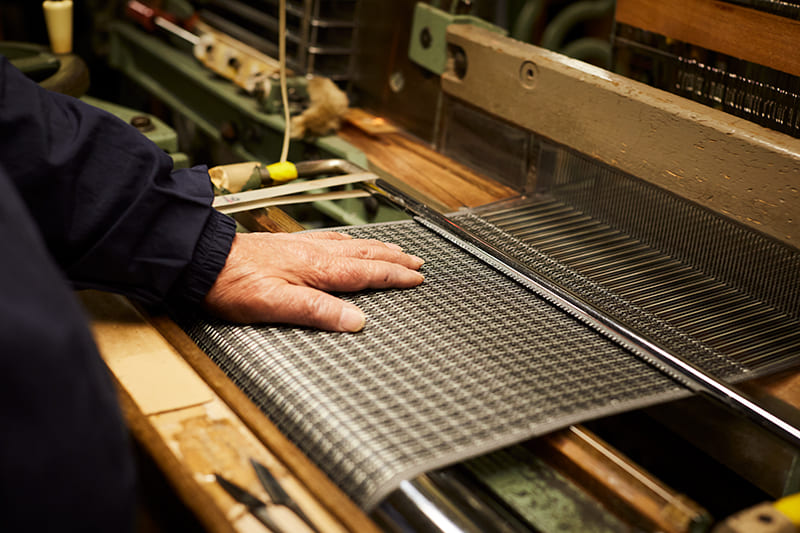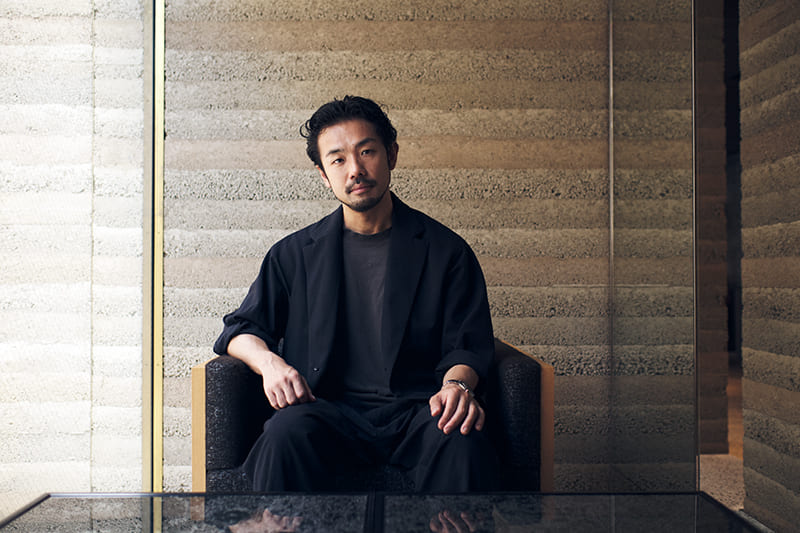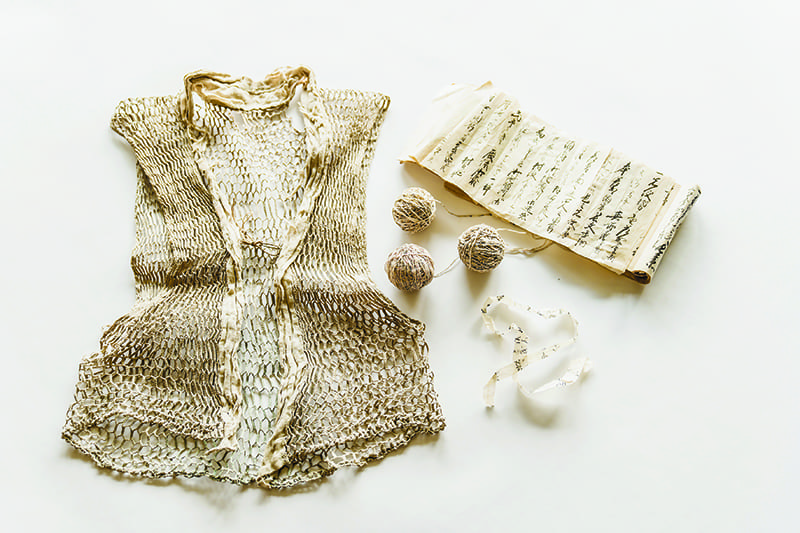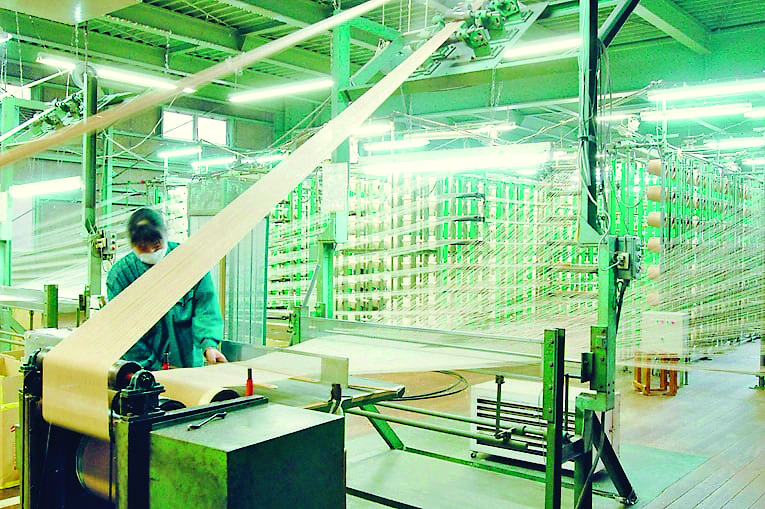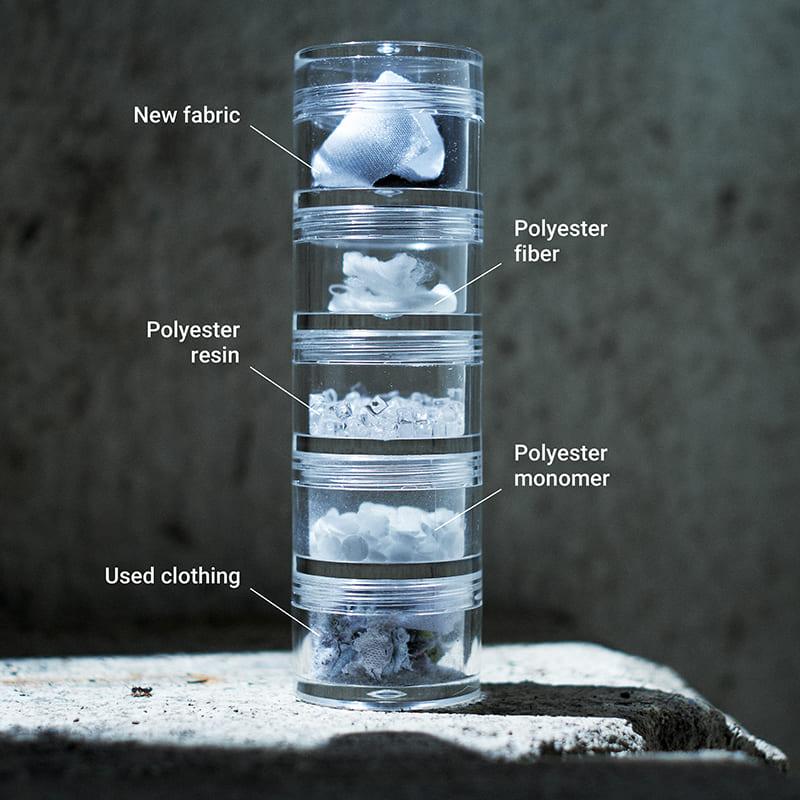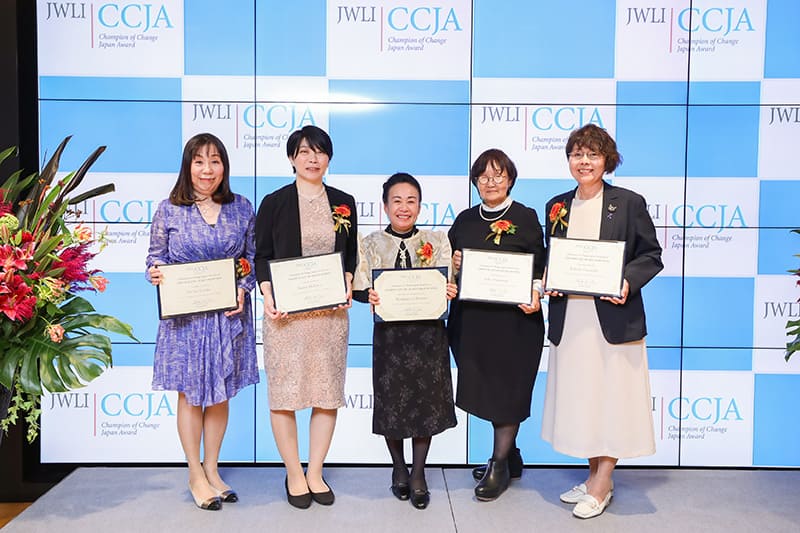August 30, 2021
Cosmic Wonder: Solutions for future found in the past
WASHI WAYS

PHOTO: YURIE NAGASHIMA
Since ancient times in Japan, there have been traditions of spinning plant fibers to make clothing. The environmental burden of manufacturing and distributing clothing has recently become an issue, so some fashion brands are seeking ways to return to the origins of clothes-making, applying the textile technologies of centuries past to the present day. One such company is Cosmic Wonder, which since its founding in 1997 has continued to explore the clothing that arose from the cultural climate of Japan. The company is also engaged in a wide range of activities, including art and writing. We spoke with Yukinori Maeda, a company designer.
“One of the main materials we use in our clothing is organic cotton,” he said, “but the quality of what’s sold as ‘organic cotton’ varies widely. We use only spun raw yarns that have been inspected and certified by international, third-party organizations. We also ensure that the cotton we use is not genetically modified, that it comes from wholesome organic farms that do not engage in labor exploitation, and that it is grown naturally with the power inherent to plants. We adhere to the processing standards set by the Nippon Organic Cotton Marketing Organization, using only fabrics in which chemical use was maintained below a certain standard value during fabrication.”
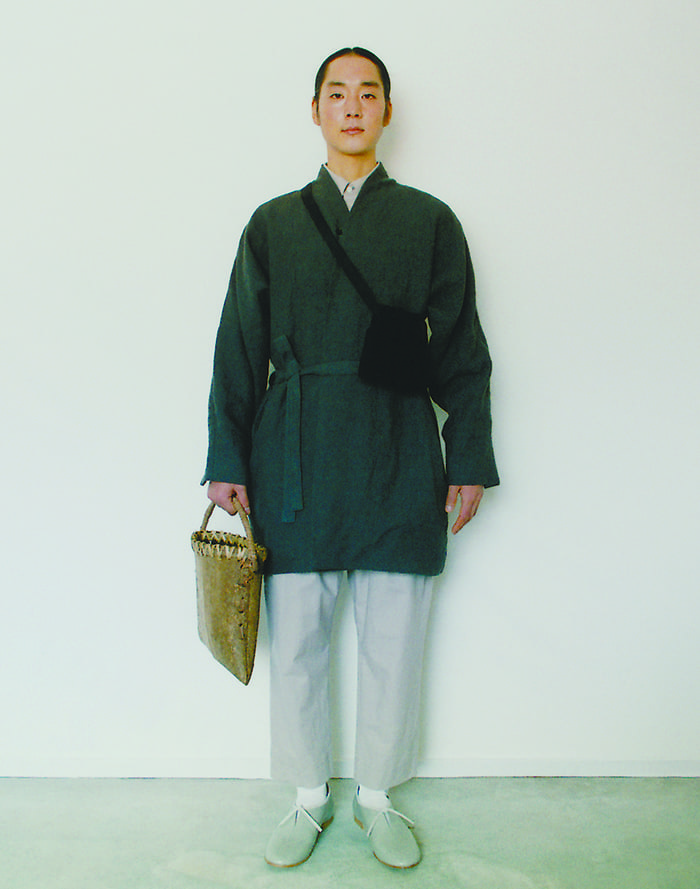
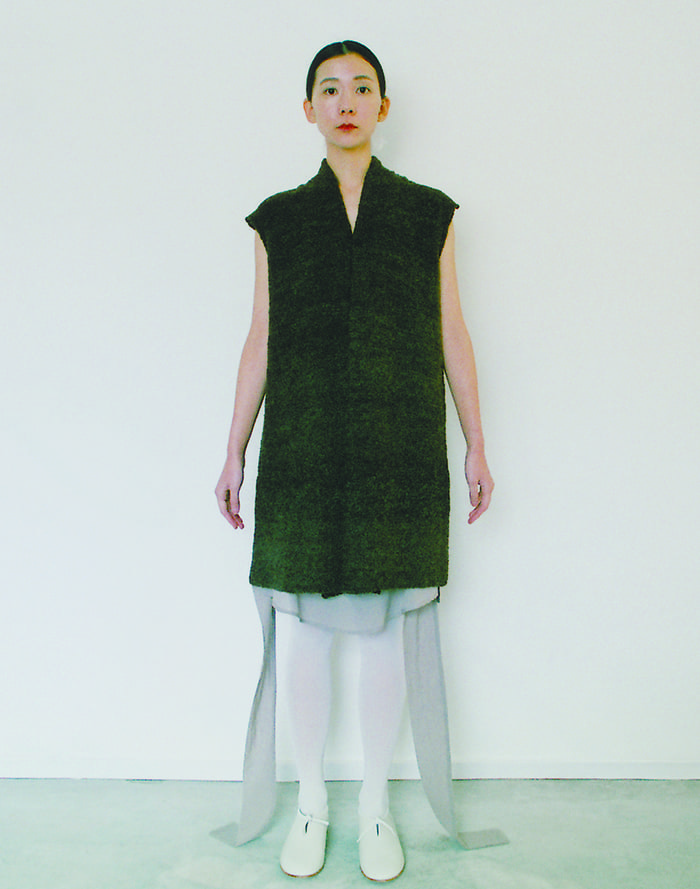
A haori kimono coat handwoven from handspun wool from sheep at farms in Hokkaido and Kyoto PHOTO: AI NAKAGAWA
Maeda, who naturally chooses sustainable production processes because of his demanding requirements for materials and techniques, says he also questions the spring/summer, fall/winter semiannual product development cycle that has become common in the apparel industry. “Starting in 2021, we’re doing away with the standard seasonal approach, switching to a policy of providing a full-year collection around a single theme,” he said. “Doing so will allow us to eliminate duplicated production processes that were previously performed twice a year and to reduce transportation amounts. Such brand attitudes are now becoming one basis for customer choice.”
Cosmic Wonder products include handwoven cloth from India, natural fabrics made from hemp and ramie, and products dyed using natural indigo and traditional Japanese mud- and plant-dyeing techniques. Maeda says these manufacturing processes require more time and effort than conventional production models but the people at Cosmic Wonder are devising new ideas every day regarding how they can create their products with fewer manufacturing steps.
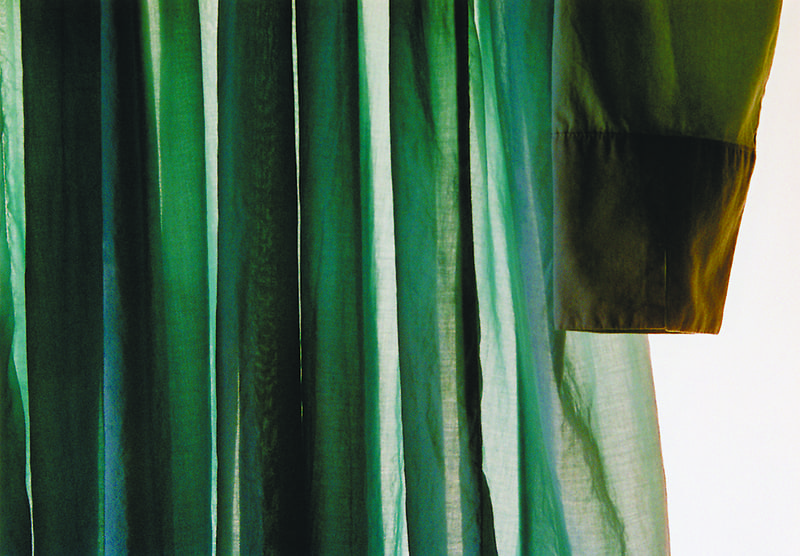
PHOTO: AI NAKAGAWA
“We perform our dyeing at plants that treat their wastewater. Using organic cotton and handwoven cloth often results in uneven dyeing and weaving defects, but rather than throw those products away, we collaborate with embroidery artist Kaoru Yokoo to caringly embroider or quilt them. In this way, we can repair what would otherwise be defective products and deliver them to our customers.”
Behind this attitude of Maeda and the others at Cosmic Wonder is a respect for the culture of making washi paper and natural fabrics that has been part of Japan since ancient times. At “NONO a Native Spirit of Kami and Cloth,” an exhibition by Cosmic Wonder and Kogei Punks Sha — an artistic team comprising Maeda and craftwork designer Sumiko Ishii — that was held in 2021 at the Iwami Art Museum in Shimane Prefecture, they introduced natural fabrics and papers that arose from the cultural climates of various parts of Japan.
“Before use of cotton became widespread in Japan,” Maeda explained, “each region had its own way of extracting fibers from plants and turning them into cloth. In traveling through various parts of Japan to study what history of natural fabrics remains, I’ve learned that cloth was once cherished as a precious item, and that there are various stories and legends related to cloth. Spinning cloth from plant fibers is a daunting task, something that we in the modern age would find difficult to continue if following the same steps. When we examine the techniques and clothing that have remained with us since ancient times, however, we can picture and feel the sight of those former craftspersons as they spun their yarn. In our fall 2021 lineup, we will offer a haori kimono coat created from hand-spun and -woven wool shorn from domestic sheep. It’s an astonishing product, like an article of clothing that has appeared from olden times. With a focus on the washi that serves as a material for natural fabrics and the water that is indispensable in the creation of washi, as we have done since 2017 we will be presenting our Omizue performance, in which we prepare and serve water as if it were tea in a small hut while wearing paper fabrics. At the root of these activities is our respect for those creators and craftspersons who continue to make things using ancient techniques. I believe that what is created from handicrafts is the very life of those persons who devote so much time to them. I hope to continue making clothing with a feeling like that.”
古来からの服作りの知恵と手仕事に、敬意を払う。
日本では古より、植物から繊維を紡ぎ衣服をつくる文化が伝えられてきた。その原点に立ち返り、数百年前の繊維技術を現代に継承できないかと考えるファッションブランドが〈COSMIC WONDER〉だ。服づくりにはインドの手織りの布や、麻などの自然布、また天然藍による藍染めや、泥染め、草木染めなども取り入れている。製造過程で多くの時間と手間を要するが、生産数を絞り、工夫を凝らして行っている。こうした姿勢の背景には、和紙や自然布づくり文化へのリスペクトがある。
2021年、島根県立石見美術館での〈COSMIC WONDER〉と「工藝ぱんくす舎」による展覧会では、日本各地の風土に根ざした自然布や紙の文化を紹介した。2017年からは。継続して、小屋の中で、紙でできた着物を羽織り、お茶を点てるように水を飲むパフォーマンス「お水え」も行っている。こうした活動の原点には、日本古来の技術を用いて、ものづくりを続ける作家や職人への尊敬の念が込められている。
Return to Sustainable Japan Magazine Vol. 3 article list page

